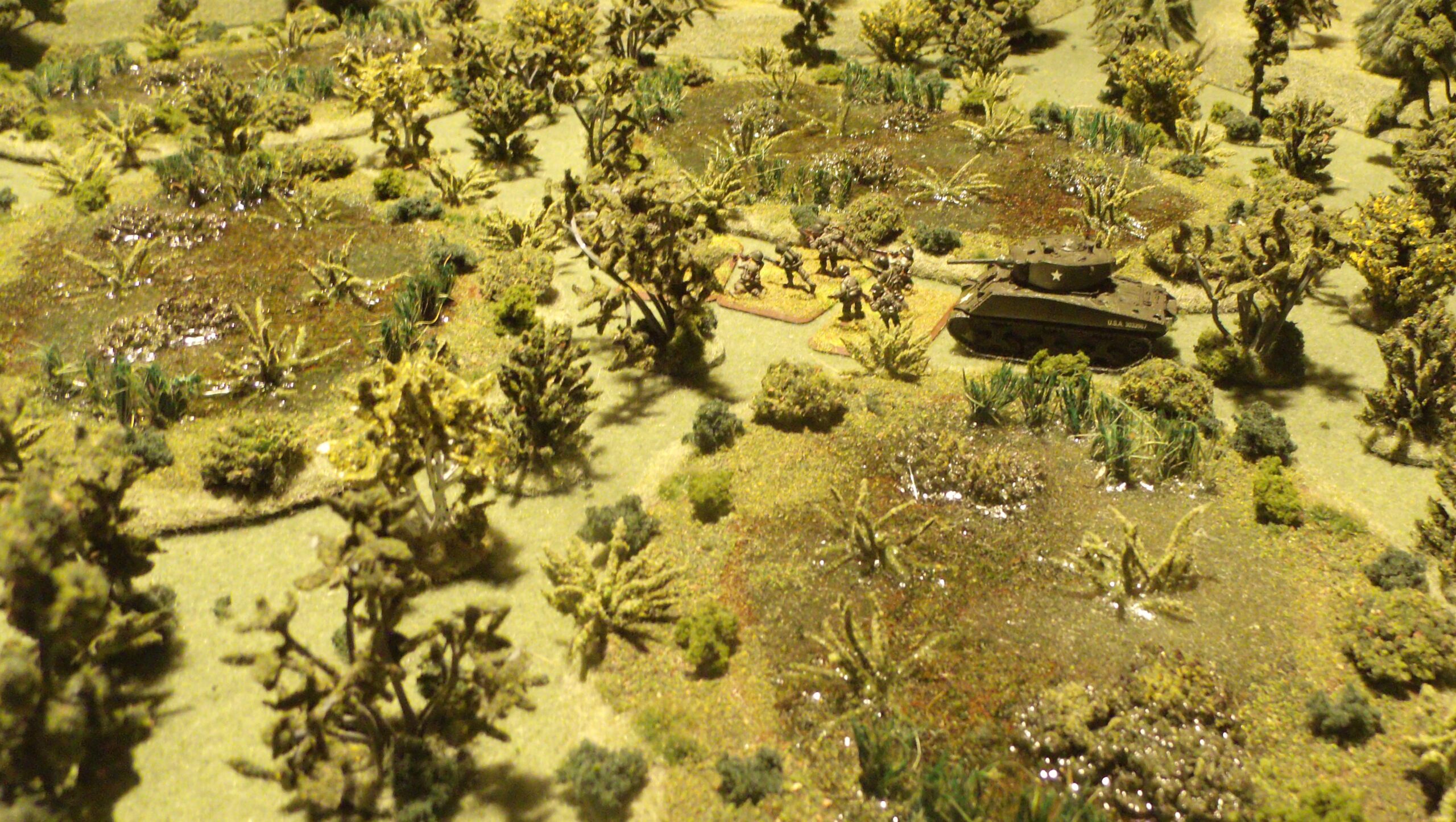
Marshy ground is a great addition to any woodland or jungle terrain set! Making some swampy pieces is actually a lot easier than most think. The problem is that most people tend think of it as a water feature, when it’s actually a vegetation feature that just happens to have water in it. My point is that it’s the plants that make or break a wetlands piece, so that’s where you should concentrate most of your effort.
We used two pieces of hardboard glued together to make our bases with, but there are many suitable materials you can use. Using something that doesn’t warp too badly is always preferable, but clamping the edges down when drying with heavy objects can also work. We like to make the edges of the bases extra wide to help cut down on the warping.
The surface was textured using some PVA glue and sand. If your basing material of choice is very porous then this is a very crucial step because you don’t want any leaky seams or unintended low spots that the clear resin can leak out of.
The sand was then painted a suitable muddy brown. Once the base prep was done it was time to start working on the plants that would make it look like a swamp. You have lots of possibilities to choose from with these but we recommend that you try and use a minimum of three different types of plants.
The first of our plants will be some reeds. These will be made from a readily available door mat. Hopefully you will already have a few scraps of this stuff laying around from when you made those classic wheat fields.
The first step is to cut them into strips. They don’t have to be straight, but using a straight edge is typically easier than doing it freehand anyways.
Next cut the strips into little reed clusters. Depending on the season you are trying to model, these can either be left a natural tan or be given a little color using a suitable wash. Keep in mind that any portions of this vegetation that is “under water” will look darker after the clear resin is applied so select color shades accordingly.
The second plant was made from leftover pieces of an earlier project to make trees from craft store plastic plants.
This time we cut them into much smaller pieces, because gaming wise it’s just easier to play in shorter swamps.
These smaller pieces were then combined into clumps of about three pieces per plant. After painting with a paint that “bonds to plastic” they were then flocked.















